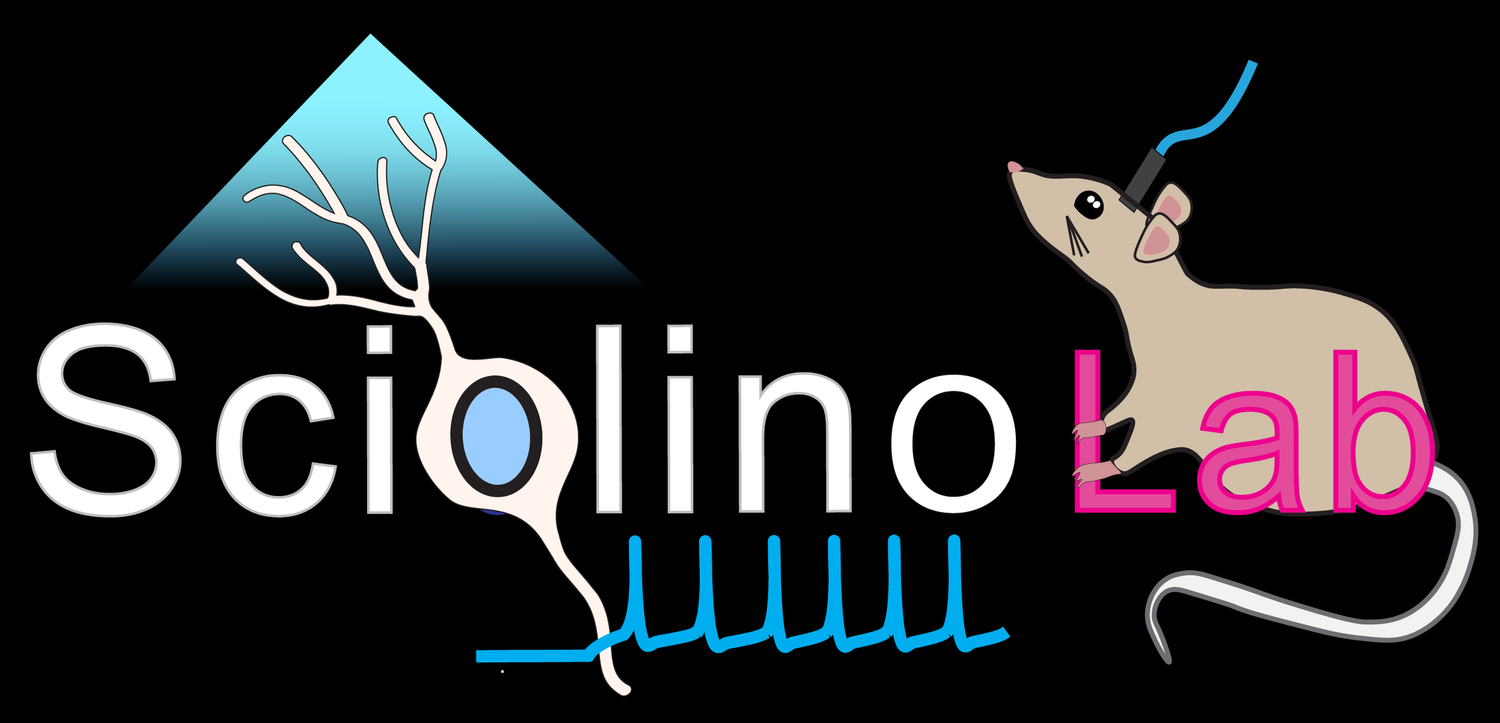Grant Support
The goal of our proposed NIH K99/R00 research is to dissect the role of the locus coeruleus (LC) to lateral hypothalamus (LHA) noradrenergic circuit in feeding and dietary obesity. The central hypothesis is that increased LC-NE activity will suppress feeding through inhibition of LHA hunger-promoting neurons. We will carry out three Specific Aims: (1) Identify the natural population activity patterns of LC-NE neurons during feeding behaviors; (2) Identify the hypothalamic cell types involved in LC-NE suppression of feeding; and (3) Determine the involvement of the LC-LHA noradrenergic circuit in the physiology and treatment of obesity. These aims will be accomplished using state-of-the-art technologies, including wireless fiber photometry to visualize neuronal activity, optogenetics tools to manipulate neural activity, and devices for high-resolution measurements of feeding behavior. The ultimate goal of this research is to inform the development of novel treatment strategies that activate specific LC-NE circuits to suppress feeding without incurring the off-target side effects observed using strategies that affect the entire noradrenergic system.
The goal of our Brain and Behavior Research Foundation NARSAD Young Investigator Grant is to determine whether heightened norepinephrine signaling in the locus coeruleus (LC) to lateral hypothalamus (LHA) pathway underlies the increase in negative affective behaviors associated with obesity. In Aim 1, we will use fiber photometry in a mouse model of obesity to investigate whether exposure to high fat diet increases both NE release in the LHA and negative affective behaviors. In Aim 2, we will employ optogenetics to explore whether inhibiting the LC-LHA pathway can mitigate diet-induced negative affective behaviors. Through these studies, we will elucidate the function of NE circuits in regulating emotion, offering valuable insights into the development of new treatments for obesity-induced anxiety. Such discoveries have the potential to substantially influence public health strategies targeting the rising burden of mental health problems linked to obesity.
The overarching goal of our Brain Research Foundation Seed Grant is to understand the influence of locus coeruleus (LC) neurons on a central taste system, the brain area known as the gustatory cortex (GC). Towards this goal, we have found that stimulating the LC-GC pathway alters the perception of taste, such that animals find an unfamiliar taste less repulsive. The first aim of this project is to examine if stimulating the LC-GC pathway affects other taste-guided behaviors, such as learning to avoid food that induce sickness. This aim will be achieved using an optogenetic technique that allows us to precisely control the timing and location of neural stimulation, empowering us to make a causal connection between how feeding is influenced by natural LC activity. Our second aim is to examine the dynamic changes that take place in GC neurons as a function of stimulating LC projections. Here, we will use brain- implantable miniature microscopes to view the activity of individual GC neurons in behaving mice and will determine how their response to taste changes as a function of stimulating the LC-GC pathway. Taken together, our work will shed light on a previously unrecognized neuromodulatory circuit that shapes how we perceive the world and what we choose to eat.
The overarching goal of our Institute for the Brain and Cognitive Sciences Seed Grant is to understand the role of endogenous cannabinoid (eCB) signaling in the regulation of locus coeruleus activity and stress-induced responses. It is well known that stress (e.g., predator threat) activates norepinephrine-containing neurons in the locus coeruleus (LC) to promote anxiety-like responses. However, the molecular mechanisms that terminate the effects of stress are unclear. While LC-NE neurons express the inhibitory Gi-coupled cannabinoid 1-type receptor (CB1R), it remains unknown if CB1R and/or the release of endogenous cannabinoids (eCB) in the LC region can play a role in stress regulation. Our overarching hypothesis is that threat activates LC-NE neurons and stimulates eCB release, thus activating CB1R on stress-responsive neurons to attenuate behavioral and physiological features of the acute stress response. First, we will use a new eCB fluorescent biosensor and fiber photometry to determine the natural eCB dynamics in the LC region during acute stress in awake, behaving mice. Second, we will use slice electrophysiology and pharmacology to determine if activation of CB1R will blunt stress-related LC excitability. Third, we will use a viral genetic strategy for selective elimination of CB1R in LC-NE neurons to determine if loss of CB1R will exacerbate stress-induced anxiety-like behavior and physiological responses. Taken together, our work will take a multidisciplinary approach to uncover how eCB signaling influences a prominent, yet understudied neuromodulatory system and its regulation of stress. PI, Natale Sciolino. Co-PIs: Daniel Mulkey, John Salamone, Melissa Boucher.
We received a CLAS Shared Equipment Grant to purchase two Inscopix Miniscope systems: 1) Inscopix nVue miniature microscopes that permit single-cell, single-photon imaging of a variety of activity-dependent brain signals, including calcium activity, neurotransmitter release, and voltage dynamics, coupled with vascular dilation, in deep previously inaccessible regions of the brain in behaving rodents, and 2) nVoKE for single-cell imaging and optogenetics. Obtaining this imaging technology would elevate the impact of our research by providing researchers with tools to study interactions between individual neurons in vivo, and to directly connect these neural activities with vascular dynamics as well as to functional behavioral outcomes in rodents. In vivo miniscopes therefore holds the promise of significantly advancing our understanding of brain circuits, cellular mechanisms, and neuroethology. PI: Natale Sciolino, and Co-PIs include Alex Jackson and Anasstasios Tzingounis.





